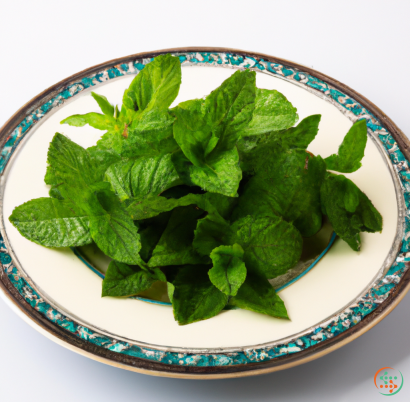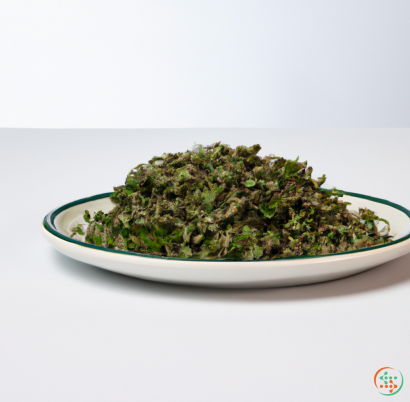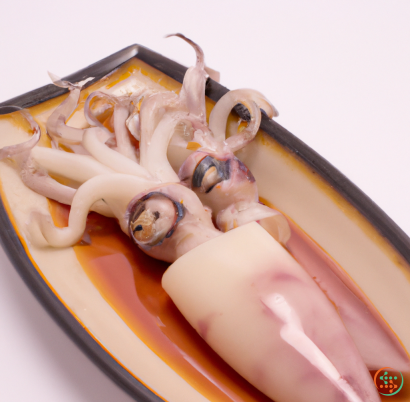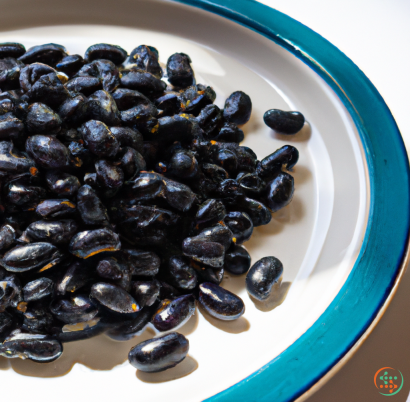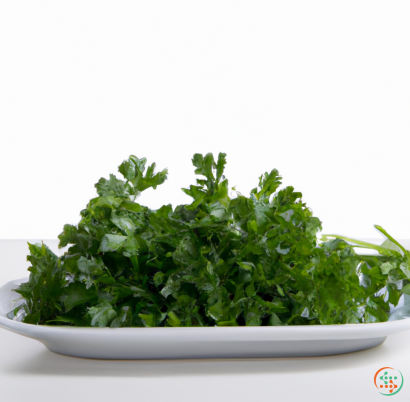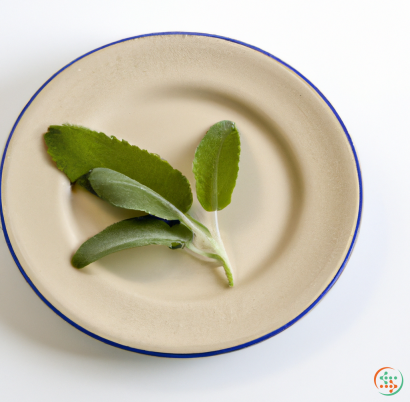Spearmint
A spearmint is a type of mint plant that has an aroma and flavor similar to peppermint, but it is noticeably milder. The plant is part of the Lamiaceae family, which includes many other herbs as well. Spearmint is easily recognizable due to its bright green pointed leaves that end in a serrated edge. The leaves can either be straight or slightly curved.
Spearmint has long been used for its aromatic and medicinal properties, dating back thousands of years. Ancient Egyptians and Greeks used spearmint for their own care and ceremonies. In traditional herbal medicine, spearmint has been used for its digestive, antispasmodic and anti-inflammatory properties. It was also used to treat fever, migraine, and tiredness.
Today, spearmint is commonly used in various foods and beverages. Its sweet, refreshing flavor adds zing to recipes such as muffins, cakes, ice cream, and hot chocolate. Its flavor is also used in confectionery, chewing gum, candy, and liqueurs. In addition, the essential oil of spearmint is widely used in soaps, lotions, and perfumes.
When it comes to tinctures, spearmint is mainly used to support the digestive system. It is prescribed as a natural remedy to help ease abdominal pain, promote good digestion, and aid in the expulsion of gas. It can also help reduce nausea and heartburn. An infusion of spearmint can help with respiratory issues such as asthma, bronchitis, and sinusitis. Spearmint also has anti-fungal, antiviral, and antibacterial properties that make it a great choice for treating skin and scalp issues.
Spearmint can be added to teas, eaten fresh with salads, or dried and ground into a powder. When brewing teas, it is best to use 1 teaspoon of spearmint leaves for each cup of hot water and steep for 10 minutes. For more intense flavor, it is recommended to add more leaves and steep longer.
When using spearmint in fun and creative ways, it is important to note that the leaves are rather fragile and can turn bitter when cooked. As such, it is a good idea to add them toward the end of the cooking process to obtain the best flavor. Also, it is best to use fresh leaves since dried leaves will not provide the same intensity of flavor.
In summary, spearmint is an aromatic herb that has many flavorful and medicinal uses. As an herbal remedy, spearmint can help ease digestive issues and provide respiratory relief. In recipes, it can add a refreshing and unique kick to desserts and drinks. While it might be fragile and slightly bitter when cooked, its flavor is unmistakable when added at the right time towards the end of the recipe.
How a Spearmint Plant Travels from Field to Plate
When reaching for a fresh, minty treat after a delicious meal, nothing beats a spear of spearmint. This edible herb is derived from the Mentha spicata, a perennial flowering plant that is part of the Lamiaceae mint family. Every blade of spearmint traveling to a dinner plate is the result of a lengthy journey of growth and cultivation, transportation and integration, and final preparation and consumption. Understanding the intricate details of this journey will help appreciate and respect the flavor of the spearmint after it reaches the plate.
Spearmint’s Cultivation
The first stop in the travels of spearmint begins in the field. Spearmint, like many other herbs and vegetables, requires specific conditions for ideal growth. While the herb may not be native to all regions, it can survive in typically hospitable climates—such as subtropical, temperate, and humid tropical regions. Deep, well-drained soil with a low amount of organic matter must further be present and lack any concentrated levels of animal waste or other mineral deposits, with sunshine and regular irrigation helping the plant to thrive.
Once planted, the spearmint seedlings reach full maturity somewhere between 30 and 45 days. During this time, farmers carefully and regularly survey their crop, looking for signs of pest infestation or disease. Any spotted irregularities must be treated quickly, using environmentally friendly pesticides and other environmentally conscious methods. This is done to prevent any exploitation or damage to the spearmint’s delicate ecosystem.
Before entering the next phase of the journey, spearmint growers will check the plant’s leaves to verify their condition and quality. Only when large, fragrant, and dense leaves appear can the next step begin: joining the food chain.
Entering the Food Chain
Once the spearmint leaves have been verified for ideal growth and quality, the crop is now ready to enter the food chain. To do this, the plants are first uprooted and cut off at their stems. From there, the leaves and other components of the spearmint plant must now undergo separation.
This process of separation is typically done by hand, with workers carefully and individually separating the various leaves, leafy stems, and seeds of the spearmint. Each separated section is then placed into either a common bag or box before being loaded into a truck or other conveyance and sent off to a new location.
Commercialization
The next step on the spearmint’s journey is its commercialization. This includes important steps such as labeling, inventory storage, and distribution planning. Labeling involves the placement of stickers, tags, or other identifiers to the bags and boxes of spearmint components. The information placed on these identifiers help indicate the state or country of origin, so that manufacturers and distributors can better plan inventories and shipments accordingly.
Once the spearmint has been assigned formal identification, it can now be stored in its respective warehouses or refrigerated units. This is done to ensure its freshness and prevent any potential changes in flavor or texture. After proper storage, the spearmint can enter the distribution process.
Distribution Process
The spearmint’s journey ultimately ends in the hands of distributors, who are tasked with moving the edges of the plant from its production location to the respective stores and markets of the end-user. Distributors pick up the spearmint from the warehouses and carefully transport it across the country or even internationally—keeping in mind its potential spoilage, temperature sensitivity, and other factors that can affect its quality. In order to ensure its safety, typically the truck used by the distributor will be lined with a special insulation material.
When the transporter reaches their destination, the spearmint can then be officially delivered to the stores and markets. Typically, each store and market will have its own specialized machinery used to separate the plants into smaller, retail-ready sizes. These machines can further package the spearmint into sealed bags and boxes, so that it can stay as fresh and flavorful as possible as it travels to its final destination—your plate.
Preparation and Consumption
Once its journey is complete, the spearmint can now be taken home and prepared for consumption. However, its preparation begins long before it reaches the plate. All the way back in the fields, the spearmint is cleanly and carefully handled so that it arrives untouched and intact.
In addition, the spearmint was stored and transported to locations at a controlled temperature or instantly cooled, mitigating any potential spoilage throughout its travels. As the spearmint leaves and stem fractures are broken down in the store or markets, further breaks down the vector of contamination and reduces the risk of an inferior taste.
When you take the spearmint home, the herb can quickly be chopped, blended or simply added to any number of dishes or drinks, instantly adding its unique and flavorful, yet subtle, menthol-like taste. Whether you choose to add it to salads, desserts, smoothies, or any number of other dishes, a single spear of spearmint can certainly please the plate and provide that minty finish to many amazing outcomes.
Conclusion
Spearmint is an herb with a long journey to the plate. Its cultivation, commercialization, transportation, and preparation have each played their own critical role in ensuring its quality and protection on its route. After passing safely through each stage, the spearmint is then ready to be used, providing its unique and refreshing taste to many dishes and drinks. Each plate of spearmint, therefore, tells a story that stretches far beyond what can be imagined.
| Vitamin A | 0.203 mg | |
| Vitamin C | 0.0133 grams | |
| Vitamin B1 | 0.08 mg | |
| Vitamin B2 | 0.18 mg | |
| Vitamin B3 | 0.95 mg | |
| Vitamin B5 | 0.25 mg | |
| Vitamin B6 | 0.16 mg | |
| Vitamin B9 | 0.105 mg |
| Calcium | 0.199 grams |
Daily Value 1.3 g
|
| Iron | 0.01187 grams |
Daily Value 0.018 g
|
| Magnesium | 0.063 grams |
Daily Value 0.4 g
|
| Phosphorus | 0.06 grams |
Daily Value 1.25 g
|
| Potassium | 0.458 grams |
Daily Value 4.7 g
|
| Sodium | 0.03 grams |
Daily Value 2.3 g
|
| Zinc | 0.00109 grams |
Daily Value 0.011 g
|
| Copper | 0.24 mg |
Daily Value 0.9 mg
|
| Manganese | 0.00112 grams |
Daily Value 0.0023 g
|
| Tryptophan | 0.05 grams | |
| Threonine | 0.135 grams | |
| Isoleucine | 0.135 grams | |
| Leucine | 0.247 grams | |
| Lysine | 0.141 grams | |
| Methionine | 0.046 grams | |
| Cystine | 0.036 grams | |
| Phenylalanine | 0.168 grams | |
| Tyrosine | 0.099 grams | |
| Valine | 0.164 grams | |
| Arginine | 0.151 grams | |
| Histidine | 0.066 grams | |
| Alanine | 0.171 grams | |
| Aspartic Acid | 0.388 grams | |
| Glutamic Acid | 0.358 grams | |
| Glycine | 0.158 grams | |
| Proline | 0.135 grams | |
| Serine | 0.128 grams |
| Total Sugars | 0.131141 grams |
per 100g
|
| Palmitic acid (16:0) | 0.14 grams |
|
| Stearic acid (18:0) | 0.02 grams |
|
| Total Saturated fatty acids: | 0.16 g | |
| Oleic acid (18:1) | 0.02 grams |
|
| Total Monounsaturated fatty acids: | 0.02 g | |
| Linolenic acid (18:3) | 0.34 grams |
|
| Linoleic acid (18:2) | 0.05 grams |
|
| Total Polyunsaturated fatty acids: | 0.39 g | |
| Phytosterols | 0.01 grams |
|
| Total Sterols: | 0.01 g | |

